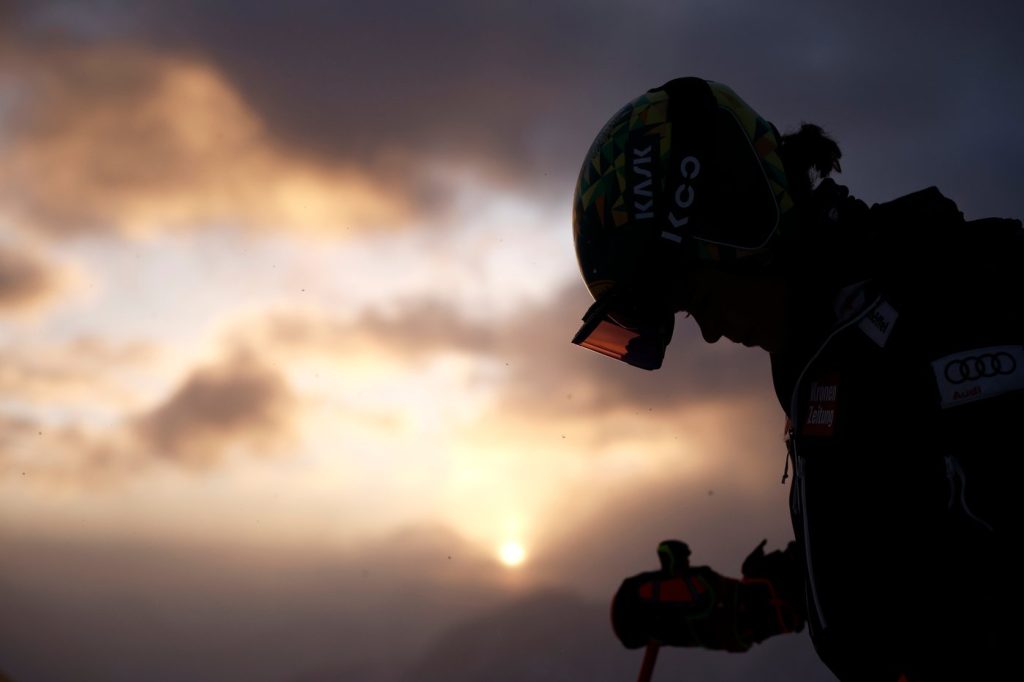The Rettenbach glacier in Soelden, Austria, is currently showcasing a light dusting of snow rather than the deep blankets typically expected ahead of the World Cup ski race. Images from the live camera indicate minimal snow cover, revealing rocks and dirt that underline the growing challenges winter resorts face. The prominent exception to this is the artificially produced snow created for the recent race, highlighting the reliance on man-made solutions in increasingly unpredictable winter conditions.
Throughout the globe, similar patterns are emerging. For instance, Copper Mountain in Colorado is also experiencing meager snowfall ahead of upcoming races. As the Earth warms at a record pace, winters have become milder and shorter, resulting in less snow. This poses significant challenges for winter sports that rely heavily on consistent and reliable cold conditions. With only 100 days until the Milan-Cortina Winter Olympic Games commence, many athletes express concern about how climate change is affecting their training routines and the future of their sports.
Snowboarder Bea Kim, who is vying for a spot on Team USA for the Winter Olympics, shares her apprehension regarding the long-term viability of winter sports. “I’m worried for the future of winter,” she said, reflecting a sentiment echoed by many in the athletic community.
Meanwhile, Canadian freestyle skier Marion Thibault reveals her struggles in securing optimal training conditions, stating that two seasons ago her team was unable to jump at their training base due to poor snowfall. Instead, they were forced to travel to Park City, Utah, to find enough snow to train. “We’re chasing the snow,” she lamented, recognizing the environmental impact of air travel necessitated by her sport. Thibault has made personal efforts to reduce her carbon footprint by opting for buses and trains and avoiding short flights between competitions.
A significant contributor to climate change, air travel emits carbon dioxide, which traps heat in the atmosphere. Thibault's ongoing collaboration with her sponsor, engineering firm WSP, involves exploring ways to cluster competitions geographically to mitigate the environmental impact of transportation.
American cross country skier Julia Kern demonstrates how climate change impacts not only winter training but also summer preparations. This past summer, smoke from Canadian wildfires hindered her outdoor training, forcing her to practice indoors instead. Kern emphasizes that while many think of winter and snowpack, their sport is equally affected during the summer months. As winter conditions become increasingly slushy due to rising temperatures, she adapts her training to better prepare for these changing environments.
In southern Europe, which is warming rapidly—a trend comparable to the Arctic—challenges are intensifying. Judah Cohen, a visiting scientist at MIT, notes that dramatic shifts have complicated expectations for winter sports. While some regions experience harsher winters, the overall inconsistency in weather patterns makes preparation for major events like the Olympics more challenging and costly. Sophie Goldschmidt, CEO of U.S. Ski & Snowboard, acknowledges that this unpredictability demands more flexibility and often necessitates relocating events to ensure athletes can train effectively.
Norwegian ski racer Aleksander Aamodt Kilde is acutely aware of the sport's environmental footprint. He balances his passion for skiing with concerns about his sport’s role in climate change, acknowledging his limited ability to enact change while competing at an elite level. On a local level, U.S. cross-country skier Gus Schumacher reflects on the stark contrasts in his childhood playground in Anchorage, Alaska, where he witnessed drastically reduced snow levels. As a member of "Protect Our Winters," he advocates for climate action and raises awareness about the impacts of climate change.
The U.S. ski mountaineering team is responding to these changes by relying on roller skis for training when snow is lacking. Sarah Cookler, the head of sport for the U.S. ski mountaineering squad, emphasizes the importance of adapting to new realities, including hosting competitions at higher elevations due to diminishing snow reliability at lower levels.
Cam Smith, another American ski mountaineer, has adapted his training regimen by running more often as a means to maintain his endurance and prepare for winter competitions that may lack snow. He has noted significant differences in conditions during competitions in the Alps and the Pyrenees, with increased mid-winter rain washing away existing snow. The environmental shifts are becoming starkly apparent, prompting athletes to prepare for an uncertain future.










